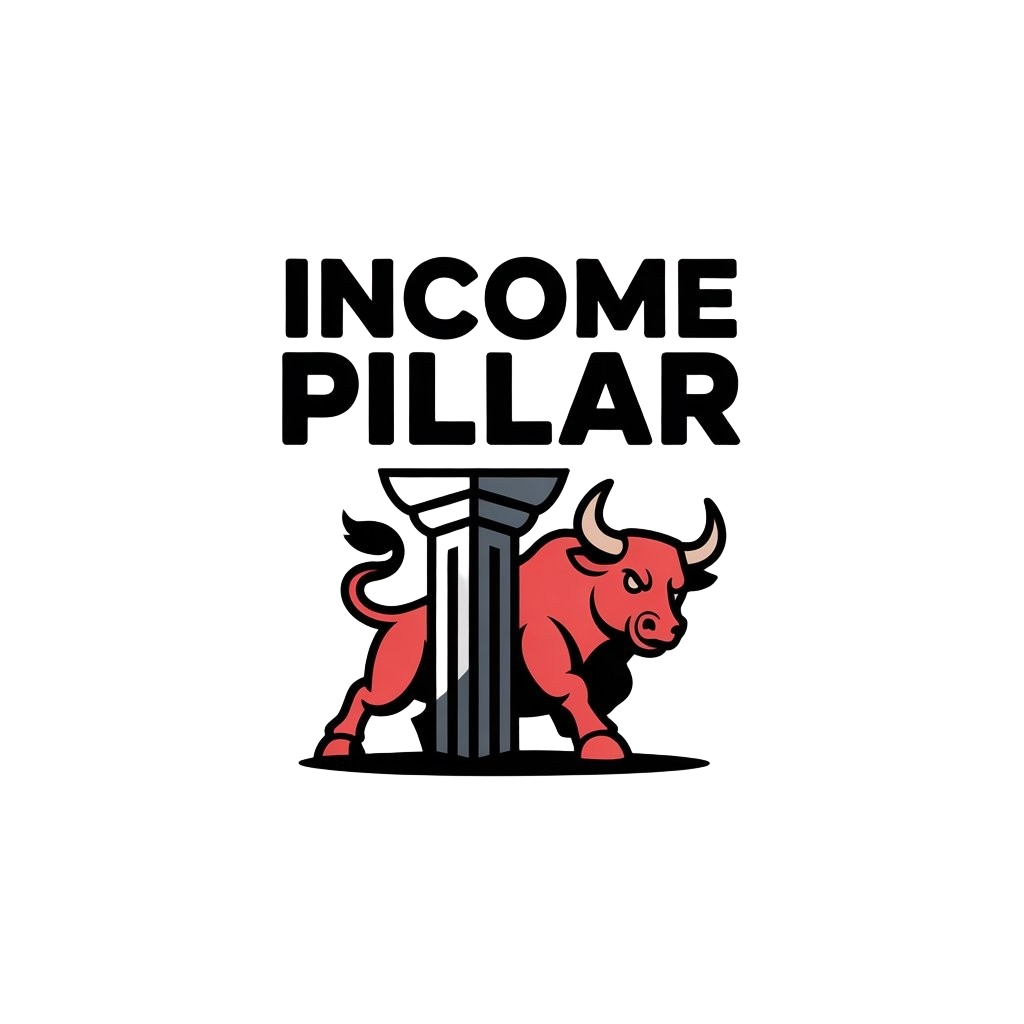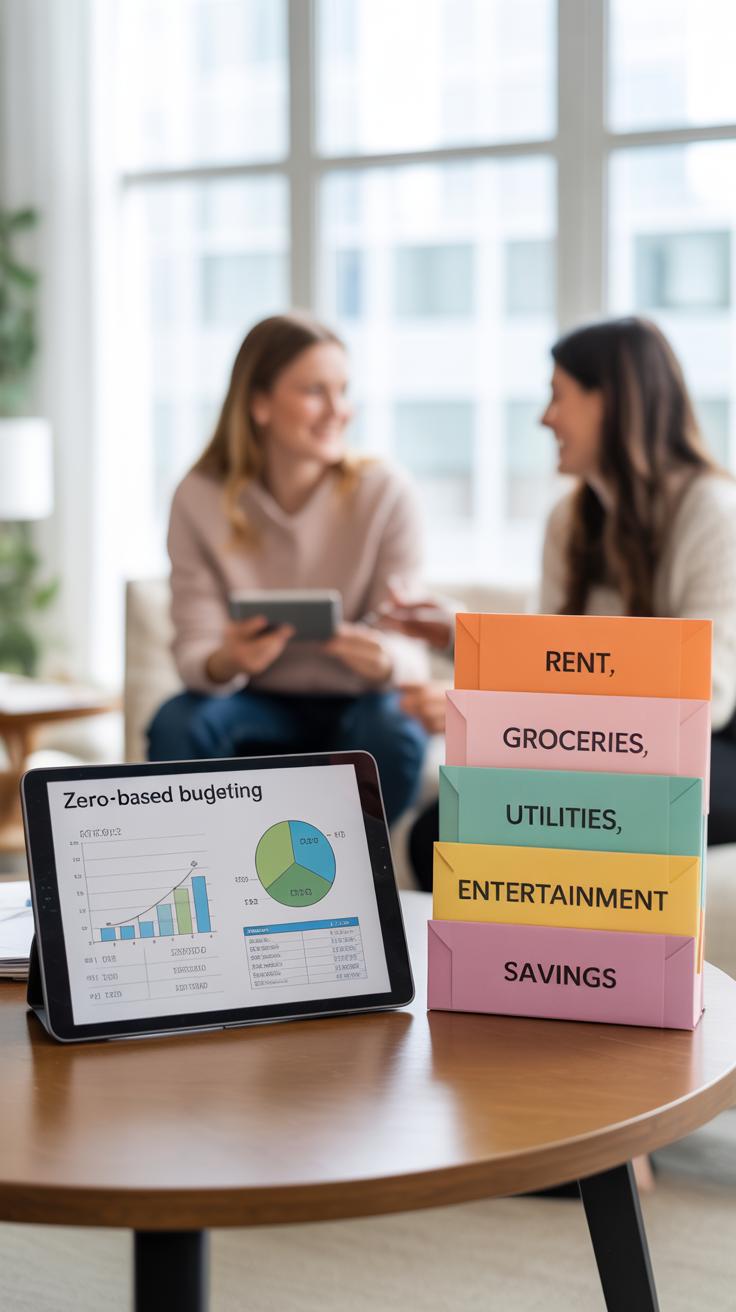Introduction
Financial stability is crucial for a stress-free and secure life. It means having enough income and resources to cover your needs and being prepared for unexpected events. One helpful way to achieve this is by using money vision board ideas that visualize your financial goals and motivate you to reach them.
This article shares financial stability tips inspired by money vision board ideas. It digs into practical steps, common mistakes, and ways to maintain your financial balance. By following these easy ideas, you can start building a stronger financial future.
How Money Vision Boards Work
Money vision boards are physical or digital collages that display your financial hopes, goals, and inspirations. They often include images, words, numbers, or symbols connected to your money targets. What’s interesting is how this simple tool can actually make your financial goals feel more real—almost like you’re creating a visual contract with yourself.
When you put together a vision board, you’re not just dreaming aimlessly. You’re setting intentions in a clear, focused way. Seeing those images daily pulls your attention back, helping you remember what you want and why. It’s a bit like giving your brain a gentle nudge toward better money habits.
Creating Clear Financial Targets
You want your financial goals to be as concrete as possible for the vision board to work well. Saying “I want to save more” is too vague. Instead, try framing it like this:
- Save $5,000 in an emergency fund by December
- Pay off $3,000 credit card debt in six months
- Build a monthly passive income stream of $500 within a year
Clear targets prevent daydreaming and introduce accountability. It’s easier to imagine your progress when you know exactly what you’re aiming for. And yes, you may adjust goals as you learn more about your spending and saving habits. Flexibility can be useful, but try to keep the targets tangible.
Visual Reminders for Daily Motivation
Pictures or phrases on a money vision board have a surprisingly strong impact on motivation. When you glance at your board each morning, it activates your focus and willpower. A photo of a dream home or a vacation spot tied to financial planning can spark a sense of urgency or excitement.
Some people find success by placing their boards where they get ready or near workspaces. This constant visual cue disrupts autopilot thinking, gently reminding you to make smarter choices. But it works in weird ways—sometimes that daily reminder can feel overwhelming, creating stress instead of motivation. If that happens, you might need to tweak what’s on the board or how often you engage with it.
What kind of images or messages resonate most with you? Experiment with different visuals until your board feels like a helpful, inspiring companion rather than just decoration.
Steps to Build Financial Stability
Building financial stability isn’t some one-time event. It’s more like a series of small, practical steps taken consistently. You might have heard about budgeting, saving, and managing debt—but what exactly does it mean to put those into action? Let’s break it down.
First, setting up a budget is key. Start by listing your income and then track every expense, even the small ones. This can feel tedious at first, but it really helps in understanding where your money goes. You don’t have to restrict yourself harshly—think of it as a way to gain control, not to deprive. Apps or even a simple spreadsheet work; pick what feels less like a chore.
Saving money can be tricky if you wait to do it “when there’s some left over.” Instead, try automatic transfers. Have your bank move a fixed amount to a savings account right when your paycheck lands. You might forget about that money — which is exactly the point. Also, try building an emergency fund. Aim for at least three months’ worth of expenses. This fund isn’t for splurges but for those unexpected moments when life throws a curveball.
Managing debt quietly but firmly matters too. Pay more than the minimum when possible, starting with the high-interest debts first. It can feel never-ending, but even small extra payments chip away at balances faster than you’d expect.
Have you tried setting a financial checkpoint once a month to reassess? Sometimes, reworking your budget or tweaking your saving goals can make the whole process feel less static and more usable—maybe even a bit motivating.
Avoiding Common Financial Pitfalls
High-Interest Debt Dangers
High-interest debt can quietly erode your financial stability. Carrying balances on credit cards or payday loans often means paying a lot more than you borrowed. Over time, interest compounds, making it harder to escape the cycle. You might think you can manage it, but those charges add up faster than expected.
To avoid this trap, prioritize paying off debts with the highest rates first. Try not to carry balances month-to-month when possible. If you must borrow, look for loans with lower interest or consider alternatives like a personal loan with a fixed rate. Sometimes, it’s tempting to just pay the minimum, but that only drags out the debt and increases the total cost.
Impulse Spending Controls
Impulse purchases can sneakily sabotage your budget before you realize it. Maybe you mean to only grab essentials but end up with extra items at checkout. Over time, these small buys add up—and you might wonder where your money went.
One way to tackle this is by setting strict spending limits per category each month. Another is to create a waiting period—like 24 or 48 hours—before buying non-essential items. It gives you time to reassess if you really need that thing. Shopping with a list helps too, or even leaving cards at home and sticking to cash.
You might still slip up now and then—that’s normal. The key is to recognize the pattern and gently course-correct before it impacts your savings or bills.
Comparing Budget Methods ZeroBased Budgeting vs Envelope System
Zero-Based Budget Explained
Zero-based budgeting means every dollar you earn gets a name and a purpose before you spend it. At first, that sounds restrictive—like where’s the freedom in that? But the idea is to give every dollar a job, whether it’s bills, savings, or even fun stuff. This method forces you to think about money ahead of time instead of reacting to expenses as they come.
What’s useful here is clarity. With zero-based budgeting, you can’t just let cash slip away unknowingly. It’s about intentionality. You might find some categories tight at first, but it can push you to re-evaluate what really matters. The math always balances out, ideally leaving you with no leftover dollars—or maybe a little extra to roll over.
Envelope Budgeting Benefits
The envelope system, on the other hand, is a bit more tactile. You physically divide cash into envelopes for each spending area—groceries, transport, leisure money, and so on. This gives a visual and physical sense of limits. When the envelope is empty, that’s it for the category. It’s a natural way to curb impulse buys.
Many people find it easier to control spending this way. You can literally see your money disappearing. Plus, it can feel more real than numbers on a screen. The downside might be carrying cash all the time, which isn’t always practical nowadays. But you can adapt it digitally if you want.
Both methods demand discipline, but in different ways. Zero-based budgeting leans on planning and foresight. The envelope system leans on day-to-day awareness. Which fits you better? That answer can vary with your habits and lifestyle.
Checklist for Emergency Funds
Setting up an emergency fund can feel a bit overwhelming at first. But having some clear steps can make it manageable—and maybe even a little empowering. Here’s what you might want to keep in mind:
- Start small, then build up: It doesn’t have to be a huge amount right away. Even $500 is a solid beginning.
- Track your monthly expenses: Knowing what you spend is key before deciding how much to save.
- Set a target amount: Aim for three to six months’ worth of living expenses, though some prefer even more if their income is unstable.
- Choose a dedicated place for the fund: Keep your emergency money separate so you’re not tempted to dip into it otherwise.
- Automate contributions: Schedule a regular transfer to your emergency fund account to keep saving consistently.
- Review and adjust: Life changes—job, family, or expenses—so regularly check if your fund needs to grow or if you can pause adding more.
When I first set one up, I underestimated my monthly needs. It took a couple of adjustments over the year before I felt truly secure. Does your current savings make you feel ready for an unexpected job loss or medical bill? If the answer is “maybe not,” it’s a good sign to revisit this checklist.
How Much to Save
There’s no one-size-fits-all here. For some, three months of expenses might be fine; for others, six months feels safer—or even more. It often depends on how steady your income is and the nature of your expenses.
Think about your essential costs—rent or mortgage, utilities, groceries, minimum debt payments, insurance. Multiply that by the number of months you want to cover. For example, if your monthly expenses total around $2,500, then a $7,500 to $15,000 emergency fund could work.
If your job is secure and you’re in a stable industry, maybe three months is enough for now. But if you’re self-employed or in a field with frequent layoffs, you might want to aim higher. I once read someone choose a year’s worth of expenses—they said it gave them real peace of mind, but also felt hard to gather.
Where to Keep Savings
Stashing your emergency fund somewhere accessible but separate from daily spending accounts is key. Here are some spots to consider:
- High-yield savings accounts: These offer easy access plus better interest rates than regular savings.
- Money market accounts: Similar to savings but can provide check-writing abilities, adding flexibility.
- Certificates of Deposit (CDs): These lock money for a set time and pay higher interest. Only good if you don’t need to access funds quickly.
- Online banks: Often they provide higher rates and lower fees, but remember to check withdrawal limits.
The goal is to keep the money liquid enough for emergencies but not so accessible you spend it impulsively. When I tried keeping mine in a checking account “just in case,” I found myself spending from it too often. Putting it in a separate savings account helped me resist that urge.
Use Tools to Track Finances
Keeping an eye on your money is hard without the right tools. I’ve found that apps and digital platforms do more than just show numbers; they actually keep you honest with yourself. When you track spending and saving in one place, those vague ideas about your finances start to take shape. You might think you’re saving enough, but seeing the data laid out can challenge that belief.
Some apps focus on budgeting, others on investments or debt payoff, and a few try to do it all. You could try several before you find the one that fits your style—even if that feels like a bit of trial and error. The key is having real-time updates and clear visuals so you can understand what’s going on without diving into complicated spreadsheets.
Budgeting Apps Overview
Picking an app depends on what you want to achieve. For simple budgeting, Mint is often recommended; it’s free, links to your bank accounts, and automatically categorizes expenses. YNAB (You Need A Budget) takes a different approach, focusing on assigning every dollar a job, which can feel restricting or freeing depending on your personality.
Other apps like PocketGuard show you how much spending money you have left after bills, so you don’t accidentally overspend. EveryDollar uses a zero-based budgeting system that’s very hands-on, which some find motivating but others might see as an unnecessary extra step.
Spending Alerts and Reports
Alerts can be surprisingly helpful. When your bank or app notifies you about a large purchase or a low balance, it’s a chance to pause and reassess before you go too far. I remember once getting a warning about a subscription renewal I had forgotten, which saved me money I could redirect elsewhere.
Monthly or weekly spending reports can either motivate or stress you out. Some people find charts and summaries clarify spending habits, while others might ignore them or feel guilty. Still, those reports often reveal patterns you would never notice otherwise—like how small, frequent purchases add up or where you might trim back.
Do you check your spending alerts as soon as they arrive? If not, why not try setting your phone to prioritize these messages? Monitoring your money isn’t just about discipline; sometimes, it’s about catching things before they become problems.
Setting Realistic Timelines
When working with your money vision board, setting timelines for financial goals can be trickier than it seems. You might picture achieving everything quickly, but the truth is that rushing often leads to frustration. Instead, break down your goals into smaller, manageable steps that feel doable. Maybe you want to save a certain amount for an emergency fund—decide if that’s something to accomplish in three months, six months, or a year. Your vision board can help by visually mapping out these milestones—you see deadlines that don’t feel overwhelming but still push you forward.
Short-term goals often revolve around things like paying off a credit card or building a small savings cushion. These can usually be planned for within weeks or months. Long-term goals—say, buying a home or retiring early—need a different approach. They stretch over years, even decades, so your focus has to shift from immediate actions to sustained habits. If you think about it, short-term wins keep you motivated, but the long haul demands patience, which can be quite challenging to hold onto. Using your vision board to separate these timelines can help you see where your energy should go at any given moment.
Tracking your progress regularly doesn’t have to be complicated. A simple monthly check-in with your budget or a quick glance at your savings balance can tell you if you’re on track or if a tweak is needed. If you notice you’re falling behind on a goal, ask yourself why. Did unexpected expenses come up? Were your estimates too optimistic? That’s where adjusting your plan makes sense—maybe stretch a timeline or reduce some expenses. The key is consistency, not perfection. Keeping your money vision board updated with these realities makes it a living tool, not just a hopeful poster.
Examples of Financial Success Stories of GoalSetting and Vision Boards in Action
Case Study One: Vision Boards as a Financial Game-Changer
Sarah was struggling with debt and irregular income for years. She wasn’t sure where to start, but then she decided to try creating a vision board focused solely on her financial goals. At first, she was a bit skeptical—how could pictures and words stuck on a board actually change her money situation? Yet, the act of visualizing clear goals helped her clarify what she wanted.
Her board included images of a paid-off credit card, a bank balance growing steadily, and quotes about saving. Over months, Sarah caught herself making small but deliberate choices aligned with those images: cutting back on dining out, setting up automatic transfers to savings, and researching side jobs. The vision board kept her accountable and reminded her of the bigger picture whenever she wavered.
By the end of a year, Sarah had paid off two major debts and built a modest emergency fund. Maybe it was the visualization or just the repetition of goals that nudged her forward, but the process gave her a clear roadmap she could revisit daily. It wasn’t magic—just a simple way to stay focused and motivated.
Case Study Two: Budgeting and the Power of Emergency Savings
James took a more structured approach. Instead of starting with visual inspiration, he dove into tracking every penny spent. His wake-up call came after an unexpected car repair wiped out most of his savings. James realized the gaps in his financial plan and began by building a strict budget that prioritized emergency savings.
He broke his goals into bite-sized chunks:
- Setting a weekly spending limit.
- Allocating 10% of every paycheck toward an emergency fund.
- Reviewing monthly expenses and cutting unnecessary subscriptions.
This method required patience; progress felt slow at times. Yet, after 18 months, James had a fund covering six months of basic expenses. When his air conditioning unit failed unexpectedly, he didn’t stress about the cost. Even though budgeting can feel restrictive, James found freedom in being prepared. His example shows that sometimes simple, consistent effort beats flashy vision boards, or maybe they work best together—you decide.
Conclusions
Financial stability is within your reach when you set clear goals and create a plan using helpful tools like money vision boards. These boards keep your goals visible and real. You can track your progress while staying motivated to improve your money habits.
By avoiding common pitfalls and sticking to smart money steps, you will grow your savings and protect yourself from financial surprises. Use the tips and ideas shared here as a guide to strengthen your financial health and enjoy peace of mind.






















